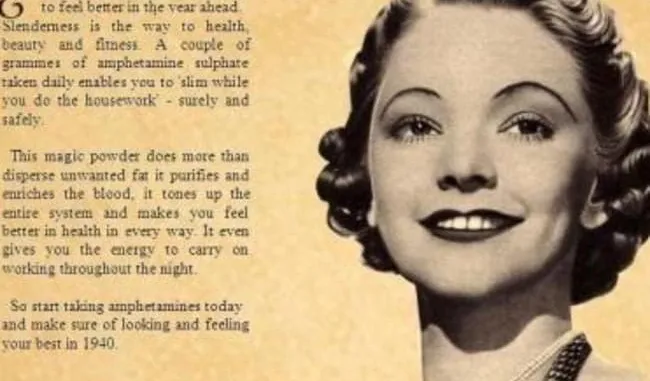 hen did we stop using drugs for the things that matter, and why? Drugs have always been an important part of human evolution, and herbalists know that a microdose of poison acts as a cure. Of course, things changed significantly when we conquered the art of the laboratory and began to chemically manufacture our drugs to manipulate our short-term abilities and accomplish more in less time. What hasn’t changed is the fact that drugs have a different effect on each person, and what felt good to Sigmund Freud had a terrible effect on Carl Jung, who encountered alcohol addiction at the very beginning of his career and was a moral method father to the founding of Anonymus Alcoholics.
hen did we stop using drugs for the things that matter, and why? Drugs have always been an important part of human evolution, and herbalists know that a microdose of poison acts as a cure. Of course, things changed significantly when we conquered the art of the laboratory and began to chemically manufacture our drugs to manipulate our short-term abilities and accomplish more in less time. What hasn’t changed is the fact that drugs have a different effect on each person, and what felt good to Sigmund Freud had a terrible effect on Carl Jung, who encountered alcohol addiction at the very beginning of his career and was a moral method father to the founding of Anonymus Alcoholics.
On the other hand, Freud wasn’t as interested in self-knowledge as Jung but was more scientifically oriented and focused on solving some major social issues such as women’s hysteria, which he stumbled upon early on, as did Jung on the widespread alcoholism among men. Freud had many ideas he was working on and was very practical when it came to standing up to pressure. Cocaine and amphetamines were widely used in Freud’s medical circles, and he made no secret of the fact that he took them primarily to study at night, get more work done, and overcome his paralyzing fear of public appearances.
When it comes to drugs, it’s hard to tell who the culprit is, where the blame comes from, and who is responsible for becoming addicted. Most drugs from the 19th and 20th centuries are now illegal and have been replaced by new ones, some natural like THC and others synthetic, like anything you can get by prescription, including your kids, who may be the biggest market for drug products today.
It wasn’t that long ago that parents and housewives were the main targets of the drug market. From the Great Depression through the Great 1990s, the last decade of the blissful American bubble, amphetamines, and methamphetamines were mothers’ only little helpers.
The Daily Routine of a Housewife in the 1950s
Parenthood is hard. It’s hard enough to be a human being without being fully responsible for another life, and being a mother is hard enough without being a housewife and your husband’s loyal on-demand mistress. According to Vintage Housewife’s research, the daily tasks of a typical middle-class suburban housewife in the 1950s looked like this.
Throw back the covers. Open the blinds and windows. Freshen up. Make breakfast and serve it. Clean up breakfast. Complete a 10-minute exercise routine. Shower, do hair and makeup, and get dressed. Gather a basket to clean up. Gradually pick up things that are out of place and put them in a basket. Distribute them back where they belong when you enter a new room. Clean up the living and dining rooms by removing possible clutter, lightly dusting, fluffing the pillows, and watering and watering the flowers. Make the beds. Declutter the bedroom and lightly dust. Hang up clothes lying around or make sure dirty clothes go in the hamper. Clean up the bathroom by removing and replacing used towels, refilling toilet paper and soap (if needed), and cleaning the sink and soap dishes.
Review the meal plan for today and the next day and compare it to what is currently in the house. Note anything that needs to be prepared in advance or what needs to be purchased. Begin dinner preparations (e.g., dessert). Wipe down the countertops in the kitchen and the inside of the refrigerator. Take out the garbage. Rinse out dish towels and hang them to dry. Sweep or mop the kitchen floor. Run errands that get you out of the house, such as shopping, volunteering, going to the post office, getting an item fixed, or do bookkeeping, correspondence, or pursue a hobby. When you get back from shopping, wash the vegetables, pack them up and put them away. Put the rest of the groceries in their place. Have a quick lunch. Start meal prep, such as cracking vegetables or thawing frozen foods.
Complete the weekly chore for that day. Set the table for dinner. Set up the living room for evening pleasure (e.g., the newspaper, book, and cigarettes from “Mister”). Quickly sweep the floors and make sure the entrances are clear. Prepare a special dish for dinner. Freshen up before your husband gets back from work. Dress in something more festive if your day dress is plain. Provide a tray of cocktail supplies in case “the gentleman” wants to serve drinks before dinner. Greet the husband “cheerfully” Serve the meal. Clear the table and wash the dishes. Pour boiling water into the sink to make sure the pipes are flushed.
If necessary, pack the husband’s lunch for the next day. Put a tray in the refrigerator for yourself if you have leftovers. Set the table for breakfast. Make sure breakfast is ready and prepare it if necessary. Enjoy an evening of relaxation.
If you can’t keep up, take a FED-approved pill
It’s strange that childcare isn’t mentioned anywhere in the schedule, which doesn’t show that it’s lacking, but that it came second, as one of those invisible activities that women do.
Another invisible activity of Yin is to radiate love, joy, and compassion all day and all night. The way she did this and the above tasks was part of her mysterious appeal, co-created by her doctor’s best intentions and the emotional language of the advertising industry. In other words, it was part of the money-making business.
Amphetamine was first synthesized in Germany in 1887 by the Romanian chemist Lazăr Edeleanu and used by Freud, who kept its high potency to himself. in 1933, amphetamine first came on the market in an inhaler called Benzedrine and was used to treat asthma. Benzedrine tablets soon followed, initially approved for the treatment of mild depression.
Amphetamine was generously distributed to World War II soldiers, and when they returned home, women left the factories and also returned home to take care of the newly emerging society and its incredible demands. And because there is a solution to every problem, the new society invented a magic pill to keep its depressed, exhausted, and unmotivated women up in the rat race. The stimulants not only kept the desperate housewives cheerful, focused, and productive, but they also suppressed hunger and made their bodies fit into the magazine’s confection.
For many years, amphetamine use was tolerated and even encouraged by authorities. The governments of several countries, including those of the Soviet Union, experimented with giving amphetamines to factory workers in hopes of making them more productive, but this was unsuccessful in the long run.
In the 1950s and 1960s, the pharmaceutical industry in the U.S. manufactured enormous quantities of amphetamines, and companies urged doctors to prescribe their products to depressed housewives and people with weight problems.
Beginning in the 1970s, criticism of pharmaceutical companies’ advertising practices and doctors’ prescribing practices led to strict restrictions on the medical use of these drugs and we began using other drugs.
Today, amphetamines can be prescribed for only a few conditions, one of the most controversial being hyperactivity in young children. Hopefully, our decade will soon abandon this dangerous practice and return coke to Coca-cola.

Writer and director who thinks different and does everything differently. Art enthusiast. Wandering and wondering. Until the end of meaning.
irena_curik@hotmail.com




